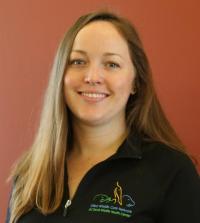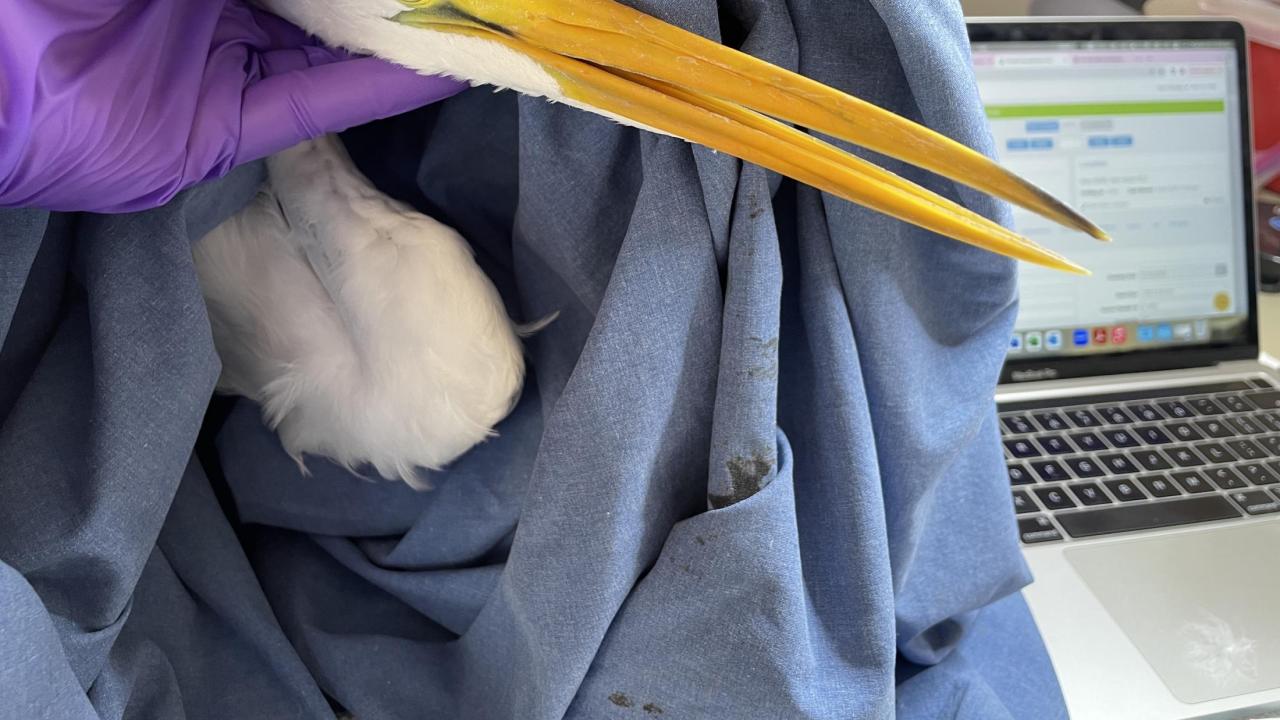
A Bird Called GREG
In 2023, the Oiled Wildlife Care Network (OWCN) partnered with California Department of Fish and Wildlife (CDFW) to provide care for birds affected by an avian botulism outbreak on Tulare Lake. From late August to November, we admitted a total of 1210 birds to our makeshift hospital at the Kern National Wildlife Refuge. Responders from seven OWCN Member Organizations were mobilized for this event.
Of the patients admitted for treatment, 864 of them were able to be rehabilitated and released—a 71% release rate. Over thirty different species of birds came through our hospital, each with unique dietary needs, housing preferences, and handling requirements. While the supportive care needed to treat avian botulism remained fairly static between species (e.g., intravenous fluids, gavage fluids, vitamins, liquid nutrition), caring for such a wide variety of birds presents a challenge in a makeshift/temporary facility. Our patient load would fluctuate by the day, depending on which areas of Tulare Lake CDFW’s airboats were working. Tulare Lake covered a massive 61,000 acres in August 2023 so the airboat drivers had to strategize when and where to direct their efforts each day. Some areas of the lake were known for waterfowl like Northern shovelers, and on days when the airboats worked there, it wasn’t uncommon for us to admit 75+ waterfowl. Other areas had more shorebird diversity so there were days when we would receive mostly black-necked stilts, long-billed dowitchers, and white-faced ibis.
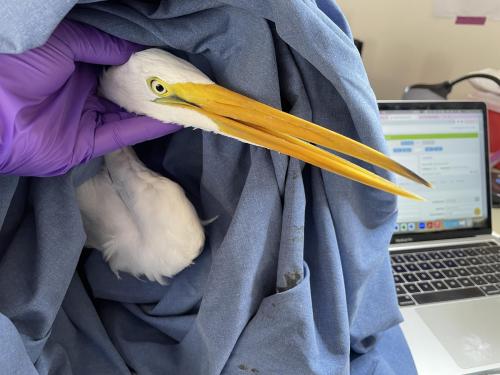
On October 4th, GREG 23-843 was one of eight patients admitted to our hospital. Now you might be wondering how this bird came to be called GREG. The OWCN is not in the habit of naming wildlife patients. In fact, CDFW, who issues our state wildlife rehabilitation permit, specifically recommends against publicly referring to rehabilitation animals by anything other than their case number, common name, or scientific name. Because while naming a wildlife patient might seem harmless, rehabilitators are careful to never represent wildlife in a “pet-like” manner. Doing so could result in the public being negatively influenced to approach or interact with wildlife in a way that is potentially harmful to both the human and the animal. So what makes GREG an exception? Well, GREG is a great egret and GREG is the alpha code for great egret! Alpha codes are four-letter abbreviations for bird species' common names. These codes are used for shorthand by ornithologists, bird banders, and yup—wildlife rehabilitators! You can check out this description of the alpha code system.
It's not unusual for rehabilitators to refer to some patients by a unique identifier. But these identifiers are light-hearted and used only amongst the staff and volunteers. In the 2021 Toro Canyon Creek spill where we treated over 90 oiled frogs, our response staff lovingly referred to our largest patient (coming in at a whopping 7 grams) as “Big Hoppa”. In the 2022 Tanzanite Park spill we referred to one of our Canada goose patients as “Corner Guy” because of his propensity to retreat to a corner of his enclosure when staff approached. He was easy to pick up and seemed to totally shut down in the presence of humans. This is not the norm for Canada geese in rehabilitation! Corner Guy’s behavior was so unusual that we conducted additional neuro, vision, and flight exams to ensure he was releasable. Ultimately, we banded and released L-33 a.k.a. Corner Guy. He was observed just a couple weeks ago (over 18 months after release) with his mate and four goslings. Yay, Corner Guy!

So while our animal care responders might use an identifier for a patient with a unique trait, we don’t name them. But I will admit, any and every great egret that I have treated is called GREG. And when a great egret is in care, you’ll hear things like “Did GREG eat his fish this morning?” or “GREG is looking really good today!” or "Please go collect GREG's poop. We need to repeat his fecal."
GREG 23-843 was weak upon arrival to our hospital. Dr. Mike Ziccardi performed his intake examination and initial treatments. Though unable to stand normally, GREG could still hold his head up. GREG was moderately dehydrated, so Dr. Ziccardi administered both oral and injectable fluids. Then GREG went to rest in the ICU. GREG spent several days in the ICU receiving fluids. While he was observed self-feeding a bit, he was not eating enough to maintain his weight so supplemental tube-feeding provided more calories.
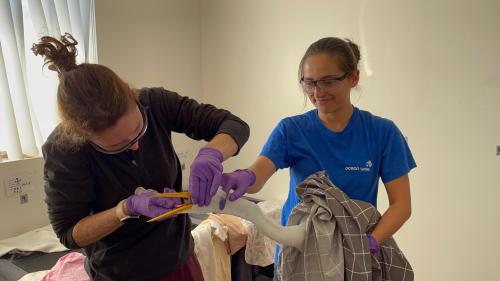
After four days in care, GREG was moved to an outdoor enclosure. Staff observed GREG standing, perching, and behaving normally in his enclosure. By October 10th, after just six days in care, GREG’s botulism symptoms had resolved and he was looking great!
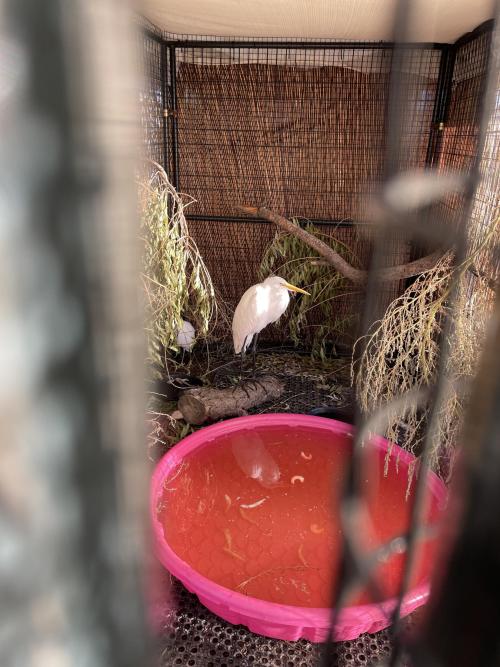
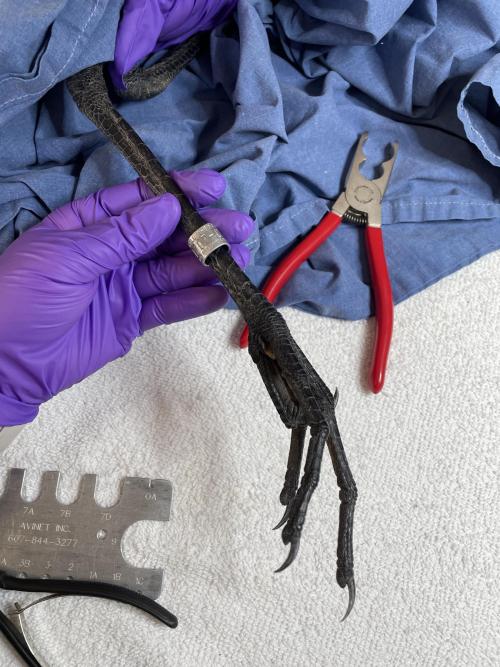
I performed GREG’s release exam and applied a federal band to his leg. A few of the response staff joined me as we drove GREG to a beautiful spot on the refuge and opened his crate. “So long, GREG!” “Good job, GREG!” "Don't come back, GREG!"
A photo of GREG’s release has been my phone wallpaper for months now, so I think happy thoughts about him on a regular basis. Hopefully he’s doing his thing, thriving, and has completely forgotten about his brush with death and all the strange primates who kept calling him GREG!
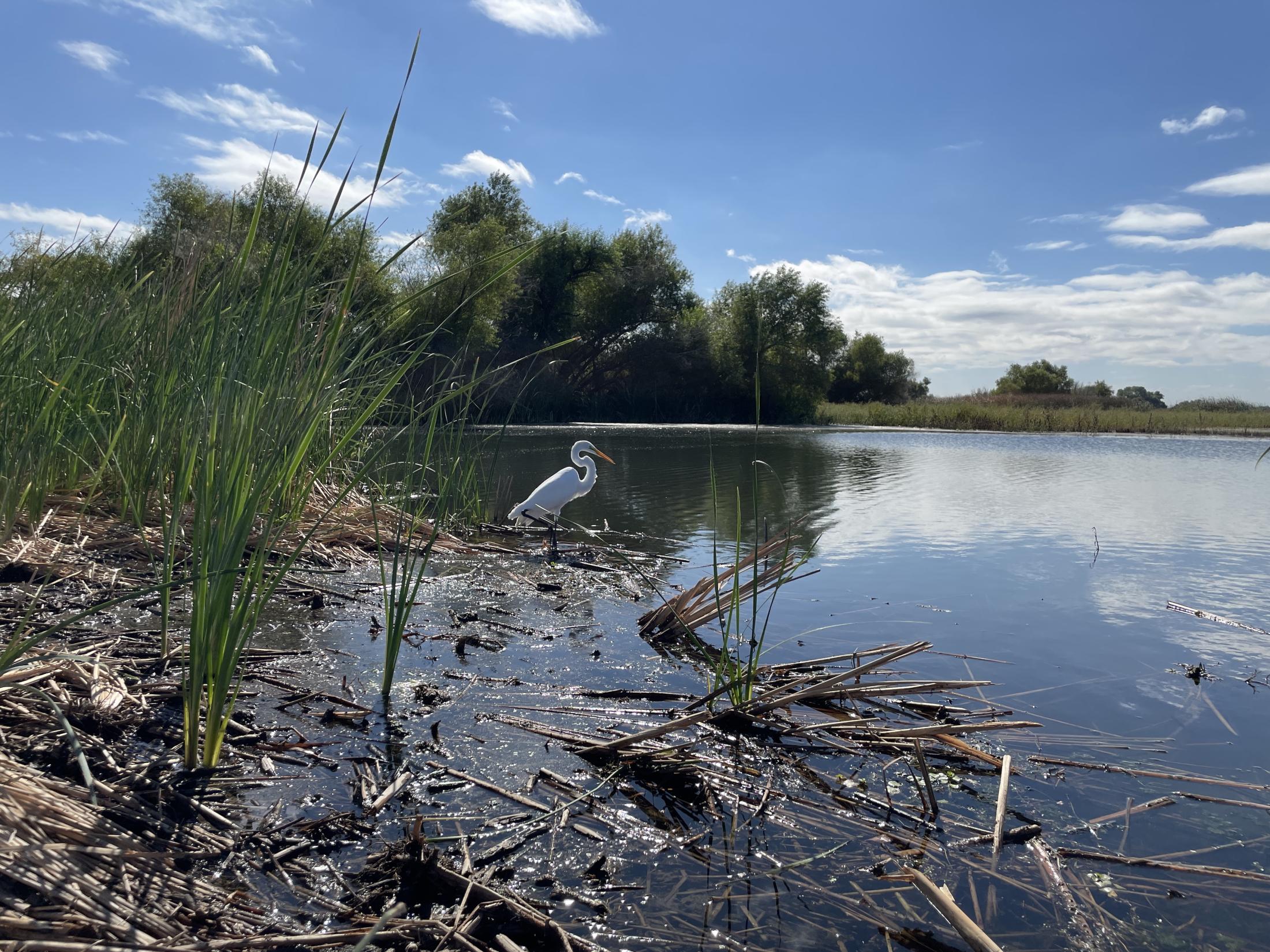
— Sam Christie, Wildlife Rehabilitator
